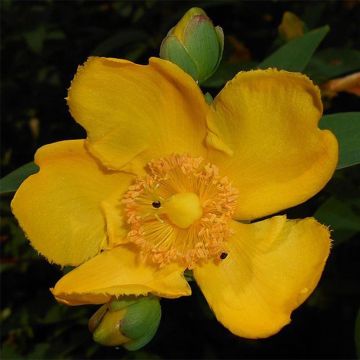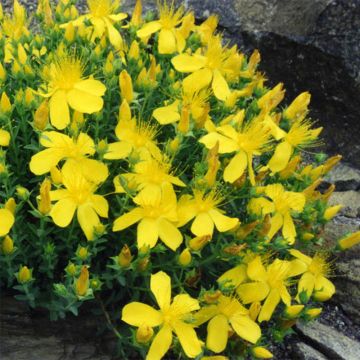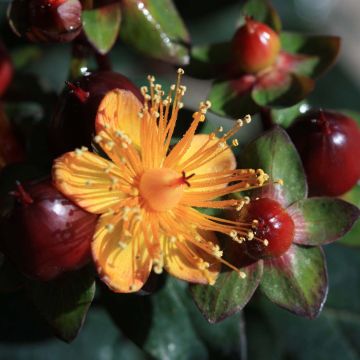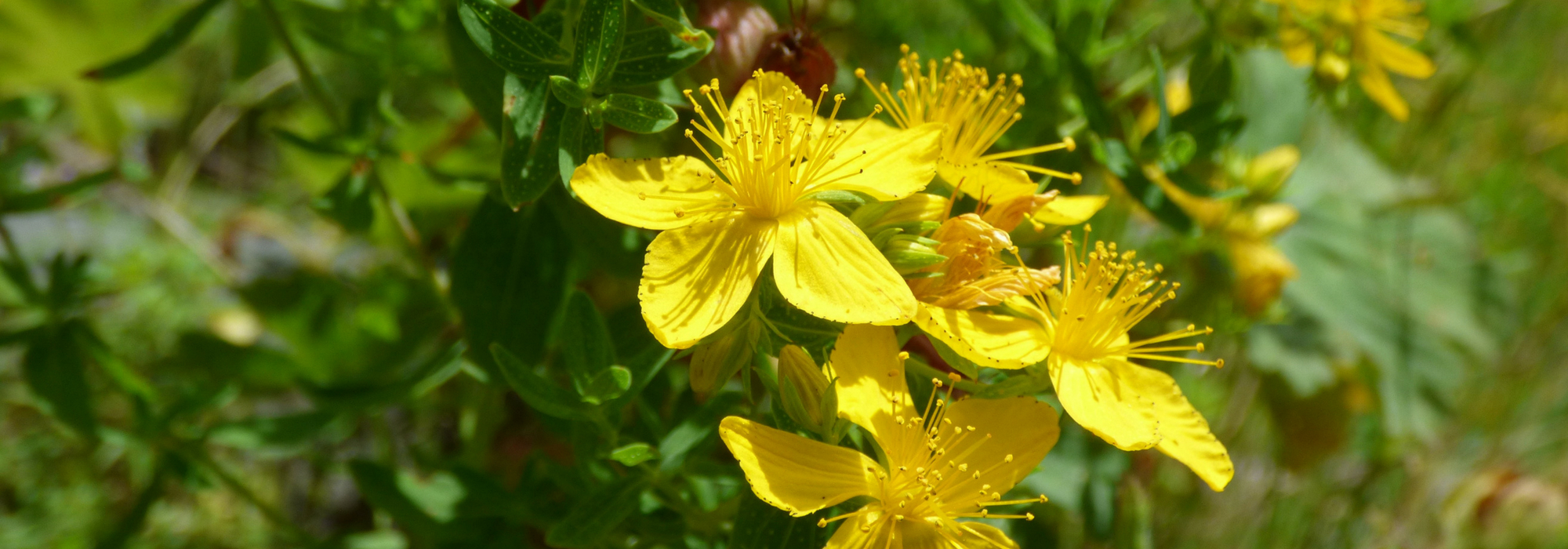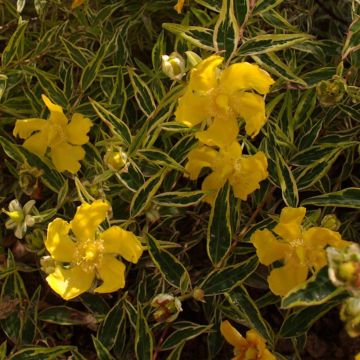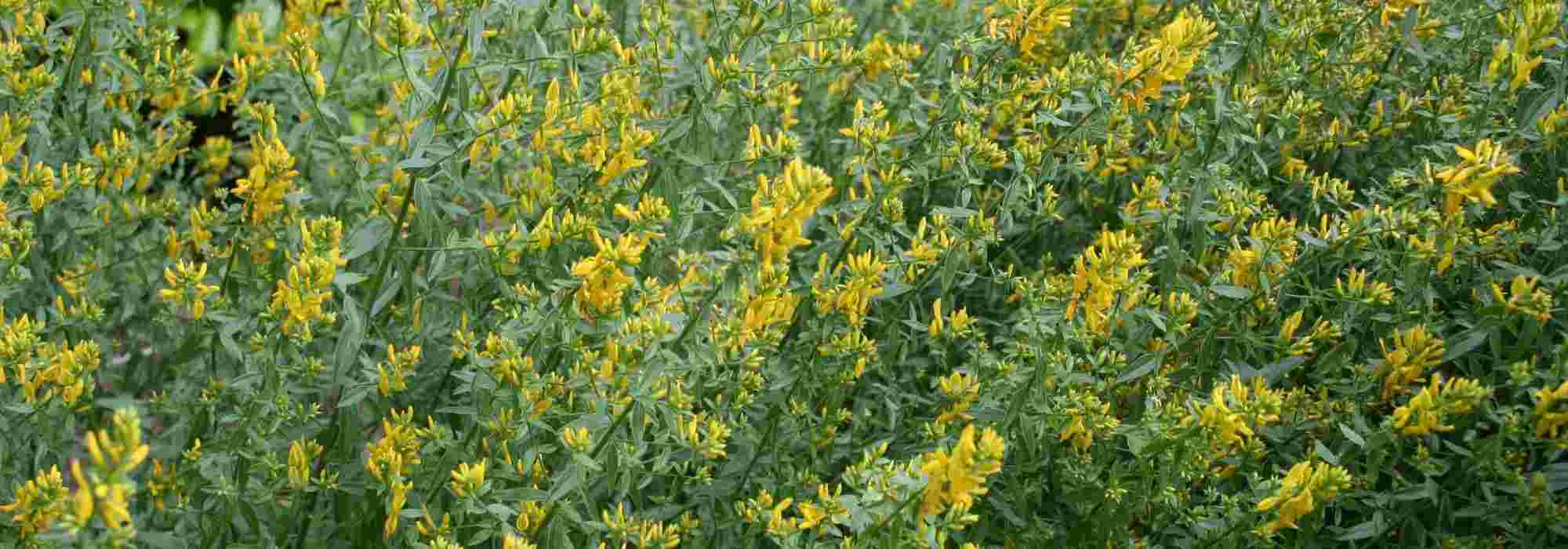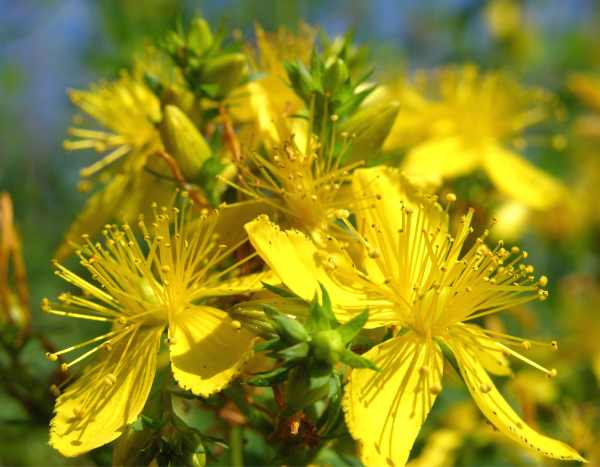

Hypericum x moserianum Little Misstery - St. John's wort
Hypericum x moserianum Little Misstery - St. John's wort
Hypericum x moserianum Little Misstery
St. John's wort
I was really disappointed with the plant, it arrived completely dry and never recovered. I had been so patient!
Danielle, 26/04/2024
Special offer!
Receive a €20 voucher for any order over €90 (excluding delivery costs, credit notes, and plastic-free options)!
1- Add your favorite plants to your cart.
2- Once you have reached €90, confirm your order (you can even choose the delivery date!).
3- As soon as your order is shipped, you will receive an email containing your voucher code, valid for 3 months (90 days).
Your voucher is unique and can only be used once, for any order with a minimum value of €20, excluding delivery costs.
Can be combined with other current offers, non-divisible and non-refundable.
Why not try an alternative variety in stock?
View all →This plant carries a 24 months recovery warranty
More information
We guarantee the quality of our plants for a full growing cycle, and will replace at our expense any plant that fails to recover under normal climatic and planting conditions.

Would this plant suit my garden?
Set up your Plantfit profile →
Description
Hypericum x moserianum Little Misstery 'Dunnehyp' is a hardy bush with a sprawling habit. It has no particular demands. Standing 50cm (20in) tall, it partially retains its leaves in winter. Its deep green foliage is bordered with yellow. This variety is also notable for its long flowering from July until September, sometimes October depending on the region. It flowers in successive waves, in the form of bright golden-yellow cup-shaped flowers with red stamens. A hardy plant, resistant to drought, ornamental, and flowering, it will easily find its place in the garden.
Hypericum x moserianum Little Misstery 'Dunnehyp' is a variation of Hypericum x moserianum ‘Tricolor’ obtained in 2010 in Ireland by Kieran Dunne. This development has more colourful foliage and more significant growth. It belongs to the Hypericaceae family. This fairly fast-growing bush usually reaches 50 to 60cm (20 to 24in) in height and 50 to 100cm (20 to 39in) in width, sometimes less depending on growing conditions. It has a bushy and rounded habit, rather sprawling, carried by flexible stems, which are red to purple in colour. They are adorned with entire leaves, semi-evergreen to evergreen in a mild climate. The slightly bluish-green leaves are pointed, leathery, and 5cm (2in). It blooms practically four months of the year, from June-July to September-October, with a break during the hottest weeks. The flowers are produced abundantly at the end of the branches. They are solitary or grouped in small bouquets of 2 to 5. They measure 6cm (2in) in diameter and are composed of 5 rounded, golden-yellow petals arranged in an open cup. The centre of the flower is occupied by a crown of protruding stamens with red anthers. This flowering is followed by the formation of a few conical fruits of red colour, which turn blue when ripe.
St. John's wort is appreciated for its very long flowering and ease of cultivation in all soils and under all our climates, even by the sea and even in the shade. If you like yellow flowers, this variety is ideal for planting in a new garden, even when you are a beginner in gardening. It excels in shrub borders and in flowering hedges, in the company of the blue flowers of caryopteris, perovskia, nepeta , or perennial geraniums. Its yellow flowering will not compete with the more pastel spring flowerings. Perennials with red summer flowering such as Epilobium canum or shrubby sage will form cheerful little scenes in a sunny garden. Perfectly hardy, plant in full sun in cool climates, and in partial shade in hot ones. Protect its foliage from scorching sun.
Hypericum x moserianum Little Misstery - St. John's wort in pictures
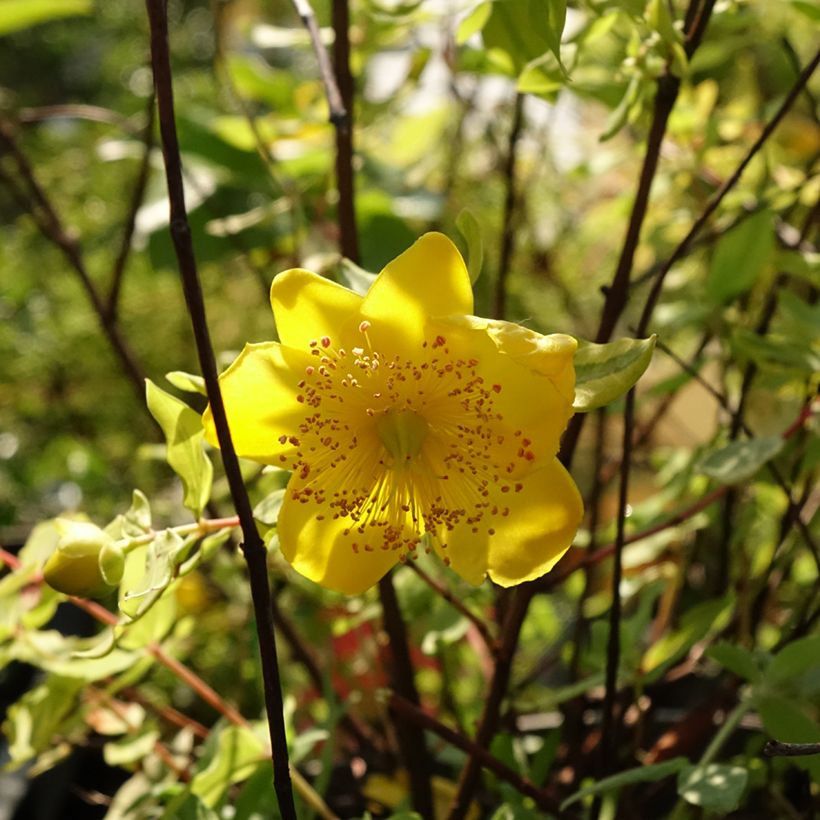



Plant habit
Flowering
Foliage
Botanical data
Hypericum
x moserianum
Little Misstery
Clusiaceae
St. John's wort
Cultivar or hybrid
Other Hypericum - St.John's Wort
View all →Planting and care
Plant in a very sunny situation in cool climates, or semi-shade in a warm climate, sheltered from the wind. Its foliage can be damaged by sun that is too scorching. It needs light, deep, well-drained soil. It cannot tolerate humidity in winter. It is hardy up to -15°C (5°F). It is not very susceptible to diseases and its enemies are rare. Carry out a shaping pruning after flowering.
Planting period
Intended location
Care
Planting & care advice
-
, onOrder confirmed
Reply from on Promesse de fleurs
Similar products
Haven't found what you were looking for?
Hardiness is the lowest winter temperature a plant can endure without suffering serious damage or even dying. However, hardiness is affected by location (a sheltered area, such as a patio), protection (winter cover) and soil type (hardiness is improved by well-drained soil).

Photo Sharing Terms & Conditions
In order to encourage gardeners to interact and share their experiences, Promesse de fleurs offers various media enabling content to be uploaded onto its Site - in particular via the ‘Photo sharing’ module.
The User agrees to refrain from:
- Posting any content that is illegal, prejudicial, insulting, racist, inciteful to hatred, revisionist, contrary to public decency, that infringes on privacy or on the privacy rights of third parties, in particular the publicity rights of persons and goods, intellectual property rights, or the right to privacy.
- Submitting content on behalf of a third party;
- Impersonate the identity of a third party and/or publish any personal information about a third party;
In general, the User undertakes to refrain from any unethical behaviour.
All Content (in particular text, comments, files, images, photos, videos, creative works, etc.), which may be subject to property or intellectual property rights, image or other private rights, shall remain the property of the User, subject to the limited rights granted by the terms of the licence granted by Promesse de fleurs as stated below. Users are at liberty to publish or not to publish such Content on the Site, notably via the ‘Photo Sharing’ facility, and accept that this Content shall be made public and freely accessible, notably on the Internet.
Users further acknowledge, undertake to have ,and guarantee that they hold all necessary rights and permissions to publish such material on the Site, in particular with regard to the legislation in force pertaining to any privacy, property, intellectual property, image, or contractual rights, or rights of any other nature. By publishing such Content on the Site, Users acknowledge accepting full liability as publishers of the Content within the meaning of the law, and grant Promesse de fleurs, free of charge, an inclusive, worldwide licence for the said Content for the entire duration of its publication, including all reproduction, representation, up/downloading, displaying, performing, transmission, and storage rights.
Users also grant permission for their name to be linked to the Content and accept that this link may not always be made available.
By engaging in posting material, Users consent to their Content becoming automatically accessible on the Internet, in particular on other sites and/or blogs and/or web pages of the Promesse de fleurs site, including in particular social pages and the Promesse de fleurs catalogue.
Users may secure the removal of entrusted content free of charge by issuing a simple request via our contact form.
The flowering period indicated on our website applies to countries and regions located in USDA zone 8 (France, the United Kingdom, Ireland, the Netherlands, etc.)
It will vary according to where you live:
- In zones 9 to 10 (Italy, Spain, Greece, etc.), flowering will occur about 2 to 4 weeks earlier.
- In zones 6 to 7 (Germany, Poland, Slovenia, and lower mountainous regions), flowering will be delayed by 2 to 3 weeks.
- In zone 5 (Central Europe, Scandinavia), blooming will be delayed by 3 to 5 weeks.
In temperate climates, pruning of spring-flowering shrubs (forsythia, spireas, etc.) should be done just after flowering.
Pruning of summer-flowering shrubs (Indian Lilac, Perovskia, etc.) can be done in winter or spring.
In cold regions as well as with frost-sensitive plants, avoid pruning too early when severe frosts may still occur.
The planting period indicated on our website applies to countries and regions located in USDA zone 8 (France, United Kingdom, Ireland, Netherlands).
It will vary according to where you live:
- In Mediterranean zones (Marseille, Madrid, Milan, etc.), autumn and winter are the best planting periods.
- In continental zones (Strasbourg, Munich, Vienna, etc.), delay planting by 2 to 3 weeks in spring and bring it forward by 2 to 4 weeks in autumn.
- In mountainous regions (the Alps, Pyrenees, Carpathians, etc.), it is best to plant in late spring (May-June) or late summer (August-September).
The harvesting period indicated on our website applies to countries and regions in USDA zone 8 (France, England, Ireland, the Netherlands).
In colder areas (Scandinavia, Poland, Austria...) fruit and vegetable harvests are likely to be delayed by 3-4 weeks.
In warmer areas (Italy, Spain, Greece, etc.), harvesting will probably take place earlier, depending on weather conditions.
The sowing periods indicated on our website apply to countries and regions within USDA Zone 8 (France, UK, Ireland, Netherlands).
In colder areas (Scandinavia, Poland, Austria...), delay any outdoor sowing by 3-4 weeks, or sow under glass.
In warmer climes (Italy, Spain, Greece, etc.), bring outdoor sowing forward by a few weeks.































